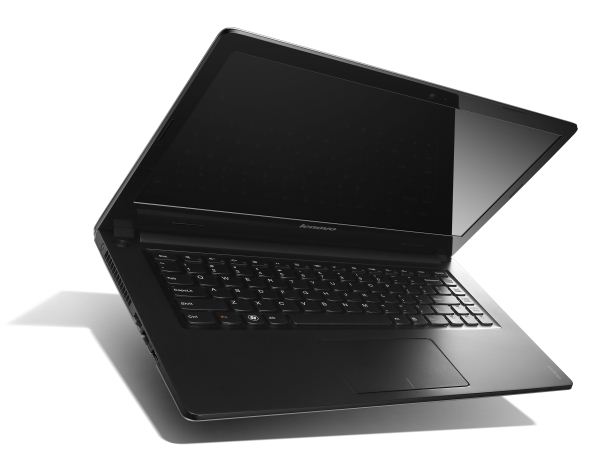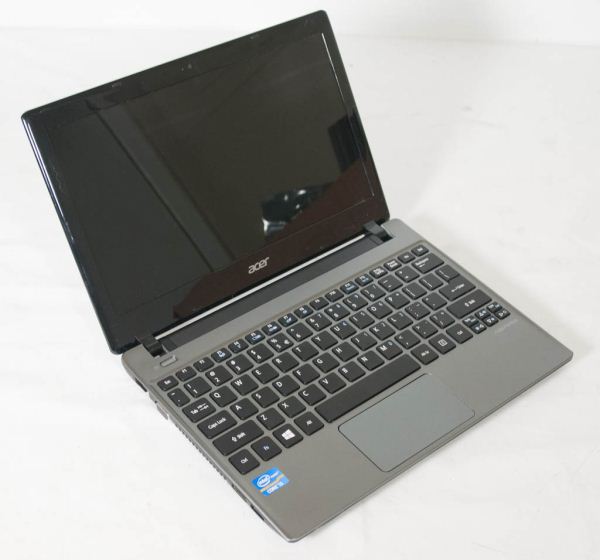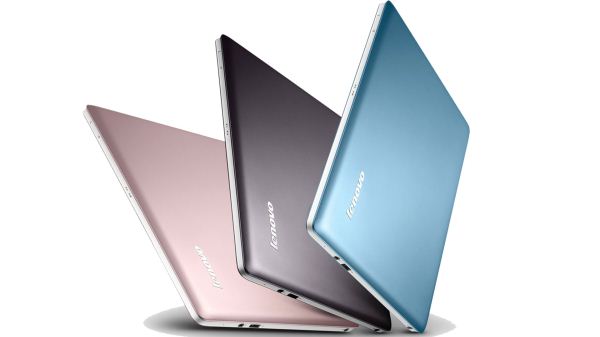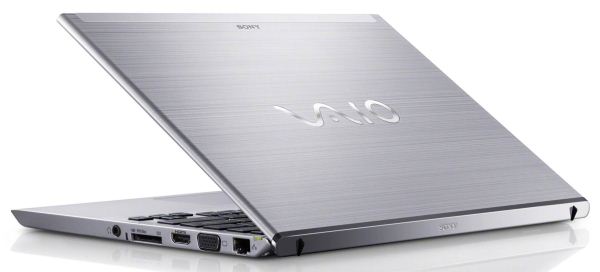Holiday 2012 Ultrabook and Ultraportable Guide
by Jarred Walton on December 12, 2012 4:00 AM EST“Budget” Ultrabooks and Ultraportables
We’re going to stretch the definition of ultraportable a bit throughout the guide, as the difference between a 1” thick laptop and a 0.7” thick laptop may or may not matter all that much. Keep in mind that thinner usually means a few things: most thin laptops are inherently lighter, but being thin usually means it’s harder to cool the parts (restricted airflow) and typically the keyboards have less key travel. If you’re trying to keep costs as low as possible, there are a few options: get a non-Ultrabook (either with and AMD APU or an Intel CPU), or look for a very inexpensive Ultrabook with hybrid storage. We’ve got three picks, one for each options.
AMD-based Ultraportables
If you’re after an AMD equipped ultraportable, your options are very limited right now, particularly in the US. Toshiba has a 15.6” Satellite S955D, but we’re trying to find a 13.3” or smaller offering. HP’s Envy Sleekbook 6z-1100 likewise misses the cut with a 15.6” LCD, though it can be configured with an A6-4466M, A8-4555M, or A10-4655M if you’re okay with the larger size—Walmart currently has the A8-4555M model selling for $450, which is a great price. Lenovo ends up the closest with their 14” IdeaPad S405, and sadly that’s the smallest AMD-equipped ultraportable we can find, so they win by default. The good news is that the S405 comes priced quite reasonably at $503 with 4GB RAM, 500GB HDD, and a 1.6GHz A8-4555M (along with Windows 8)—or as little as $400 (with current instant savings) with the A6-4455M.
Let’s be clear here: budget ultraportables are not going to compete directly with high-end Ultrabooks or other laptops. With a price of just $400-$500, something has to give, and that something is a few of the extra amenities. The S405 comes with an always-painful 1366x768 resolution glossy LCD; on an 11.6” laptop that’s tolerable, but on 14” it’s purely a cost-cutting measure. Lenovo’s IdeaPad line represents their consumer focus, so you also lose some of the build quality that you’d got on a ThinkPad or other high-end laptop. Battery life is also relatively weak on the S405, thanks to the small 4-cell battery. At the end of the day, however, we’re looking at $400 for a reasonably equipped ultraportable. The A6-4455M and A8-4555M aren’t going to win any CPU performance comparisons, but they’re still a healthy jump up from Atom and Brazos and more than fast enough for typical computing tasks, plus you get a fairly decent iGPU in the HD 7500G/7600G. That’s all in a package that’s less than an inch thick and weighs just under four pounds.
Intel-based Ultraportables
On the Intel side of the fence, there are a lot more offerings to look at, and the manufacturers have clearly put a bit more effort into the designs. Where we only had three AMD LV Trinity laptops to look at, there are fully 34 sub-$750 laptops with Intel Ivy Bridge ULV processors available at Newegg right now. The least expensive options start at $500, with 20 falling more into the $700-$750 range. The good news is that for that much money, you can get a fully equipped Ultrabook if that’s what you’re after. As with AMD, we’re going to eschew anything larger than 13.3” this time, which leaves us with 14 laptops to consider.
At the bottom of the price list is Acer’s 11.6” V5-171-6422, an almost Ultrabook that Dustin reviewed recently. The fact that it’s not actually an Ultrabook means that it’s a bit thicker and has better key travel, but you get a 500GB 5400RPM stock. The good news is that you can find the V5-171 going for $499 on Amazon, which is a great price for an i5-3317U based laptop. With the savings relative to actual Ultrabooks, you could easily buy a quality 128GB or even 256GB SSD. The V5-171 weighs just over three pounds, and it pretty much puts the nail in the coffin for most netbooks.
As an alternative that’s a bit larger than the V5-171, consider Dell’s Inspiron 13z. It’s nearly an Ultrabook, but it lacks SSD-storage and might be just a hair too thick. At the regular starting price of $600 for the i3-3217U equipped model, I’d give it a pass, but right now the 13z with i5-3317U, 8GB DDR3-1600, and a 500GB 5400RPM HDD can be had for just $550. If you don’t mind the lack of Turbo Boost, the i3-3217U with 6GB model knocks $100 off the price, going for an attractive $450. Dell skimps on a few areas like the LCD and Ethernet (100Mbps, really?), and the keyboard isn’t backlit, but otherwise it’s a very decent laptop. CPU performance should be quite a bit faster than the LV Trinity parts above, but iGPU performance is likely slower. Something else to consider is that the Inspiron 13z is actually upgradeable with a bit of work, so you can swap out the HDD for an SSD and upgrade the RAM.
Budget Ultrabooks
Looking at the remaining laptops in our Newegg list, it’s interesting to note that not a single option comes with pure SSD storage; all of the sub-$750 Ultrabooks have hybrid storage, which is something we’d really like to get away from. The cost of a 24GB/32GB SSD with a 500GB HDD should be pretty much equal to a 128GB SSD, but in the “more is better” category we find all of the manufacturers vying for your dollars with 500GB HDDs and SSD caching. Caching is still a step up from pure HDD storage, but in practice it often feels more like a hard drive when you’re actually wanting it to perform. Note that there are also some Sandy Bridge Core i3 Ultrabooks still hanging around; I suppose they’re not bad, per se, but I’d suggest going with Ivy Bridge and HD 4000. So with that in mind, is there any one specific Ultrabook we’d recommend above the others?
This is a tough call, frankly, as just about everything starts looking similar in terms of features and specs at these prices. None of the Ultrabooks under $750 have anything better than a 1366x768 display, which is a real shame. I’m also ruling out Sandy Bridge and Core i3 equipped Ultrabooks, so what we end up with is just two options, both near the $700 mark: the Lenovo U310 and the Sony VAIO SVT13125CXS. Everything else that meets the CPU requirement (at least Core i5 IVB) tends to be $800 or more. Between the Sony and the Lenovo offerings, Sony gets the nod in terms of RAM as it ships with 4GB RAM onboard with a single SO-DIMM slot, so 8GB is possible and the default configuration ships with 6GB. On the other hand, Lenovo offers an extra USB port and what I consider to be a better keyboard layout. For the small difference in price, you can go either way depending on what you value most.
Update: The Lenovo U310/U410 both appear to have had issues in the past with faulty WiFi, which you can read about on Lenovo's forums. A hardware fix was implemented this past summer, but at least one reader purchased a laptop in November and received a unit manufactured prior to the fix. If you're not willing to deal with the hassle of sending a laptop in for repairs, I'd suggest sticking with the VAIO.















77 Comments
View All Comments
Johnmcl7 - Thursday, December 13, 2012 - link
Yeah, it's an interesting disconnect between the user reviews and professional reviews. I bought the Vaio Duo 11 as it's smaller and lighter than the XPS 12 and even then, the Vaio is a bit hefty for use as a tablet so I think the XPS 12 is a bit much. I didn't like the Vaio design initially but it works surprisingly well for touch as the screen is very close to the keyboard so it's easy to lift your hands to the screen without much movement.Also the Vaio has physical LAN, VGA and full hdmi ports onboard rather than needing adapters as most other Ultrabooks do.
Whenever it's been asked 'Where is the Sony' in previous comments the reply has always been that Sony rarely give them review units so assumed it was the same in this case.
John
stratosrally - Wednesday, December 12, 2012 - link
I was commissioned to help an elderly lady friend of mine that has had a partial stroke find a new laptop. We ended up going with the Asus VivoBook Q200E. It came with an Intel® Core™ i3-3217U CPU, 4GB RAM, 500GB HDD, USB 3.0, Bluetooth, HDMI and an 11.6" Touchscreen with Windows 8. It has an aluminum chassis, as well. All for $449.99!She loves it. I'm actually a bit jealous - a year ago I picked up a Lenovo G570 i3/4GB/500GB 15.6 laptop that misses out on the USB 3.0 and the HDMI out. I paid $399.99.
lamecake - Wednesday, December 12, 2012 - link
I just got the Asus Vivobook Q200E (called X202 in Europe), put in an SSD and I absolutely amazed by it. W8 plus touchscreen works so nice and smooth. The thing weighs 1.3kg, boots in seconds, no lags oanywhere (i3 3217 + ssd + w8 goes perfect), I get about 3.5 - 5 hrs of multimedia use out of a charge, superb build quality, etc.I sold my Lenovo U410 which had worse build quality worse battery life no support and lost some theoretical performance which I don't even miss/noticed. Oh and I got back 300 euros on the swap.
Bottom line the Asus vivo book for 449dollar/euro is a real gem for the money. I'd def put it way above the mentioned Acer V171.
stratosrally - Wednesday, December 12, 2012 - link
I've read on some forums that you can replace the Atheros card with an Intel Centrino Advanced-N 6235 and with Widi software and a Belkin Screencast send a HD wireless broadcast to your1080p HDTV. Also, there is a BIOS upgrade that reduces fan noise & increases battery life - look for BIOS update 205. Lastly, the Asus SmartGesture touchpad software can be uninstalled and replaced with Samsung Series-5 laptop touchpad driver 11.7.2.1 direct from their website for vastly improved functionality. These changes along with a 7mm SSD swap make it peerless...lamecake - Thursday, December 13, 2012 - link
Already did the bios upgrade and touchpad driver update! Fan noise is barely noticeable afterwards. Only seems to be there under heavy GPU load (thing gets a bit hot.. 80c).The WiFi I was already thinking about. But out of the box it has pretty decent performance. My gf has the Samsung 5 series ultrabook, and the asus does a bit better. The U410 has a design flaw which prevented WiFi to ever work properly, (and a very short whitelist preventing any upgrade). Anyway, I'm thinking the WiFi just stays as is (atheros).
As mentioned, battery life is indeed pretty decent. Also the 7mm ssd is a very valid point to mention. Nothing thicker will fit. To enable any other HDD in the Asus you also need to set smart boot/fast boot to "disable/no", otherwise you won't get past the bios screen.
But thanks for sharing the tips. :)
stratosrally - Thursday, December 13, 2012 - link
Just spreadin' the word - enjoy your little dynamo of a portable!stratosrally - Wednesday, December 12, 2012 - link
Apologies - got the CPU wrong of my year-old purchase. I did upgrade to a nice Corsair 8GB 1333MHz kit for about $35, though. It's good enough for most day-to-day applications.failquail - Wednesday, December 12, 2012 - link
"Lenovo ends up the closest with their 14” IdeaPad S405, and sadly that’s the smallest AMD-equipped ultraportable we can find"Erm... you managed to somehow miss out the entire X-series line.
I've owned 11" AMD ultraportables for quite a few years now, first the Lenovo x100e, now a x121e. the newest is the x131e
http://shop.lenovo.com/gbweb/gb/en/learn/products/...
kyuu - Wednesday, December 12, 2012 - link
Eh... those might be interesting if they came with some kind of Trinity solution, but Brazos? If they were going to go down that far, they'd also have to throw in Atom-powered netbooks.spctm - Thursday, December 13, 2012 - link
Actually there is one decent ultrabook from Samsung that I am currently using. I have posted a review of it in AT forums. Its the Samsung series 5 535u3c with a trinity A6-4455m CPU. Granted I would have preferred a A10-4655 with a 25w TDP, nevertheless this is fine for my workload of mainly coding, surfing, and some simple photo management.The moment I got it I added additional 4GB so-dimm and a sandforce based SSD(which i already had). Wouldn't match an ivy bridge but competitive enough.